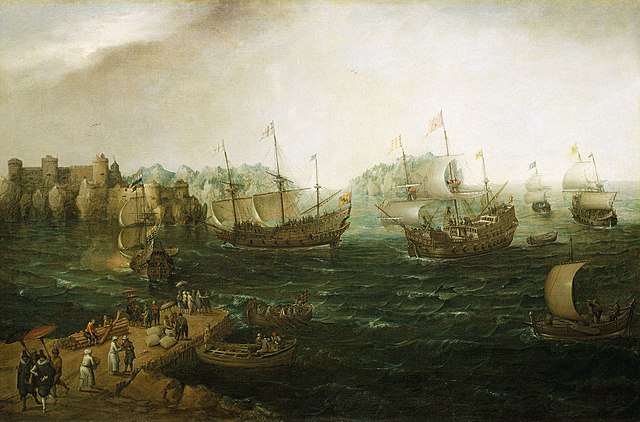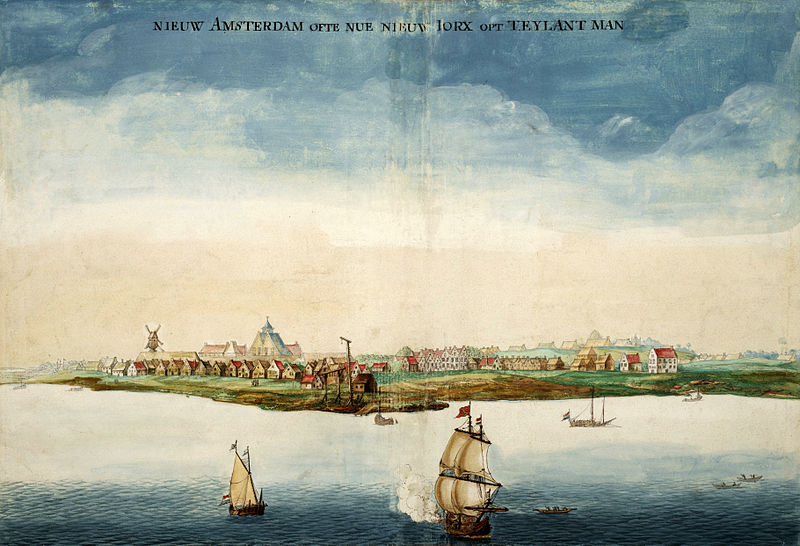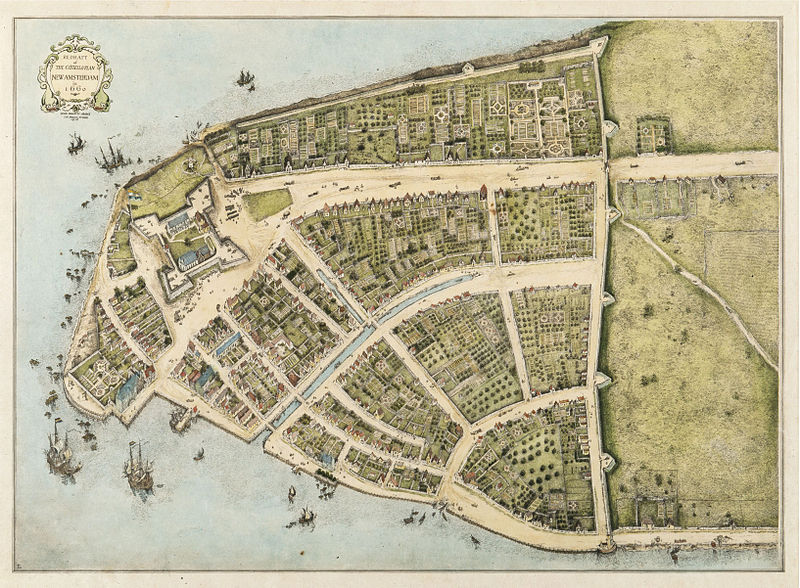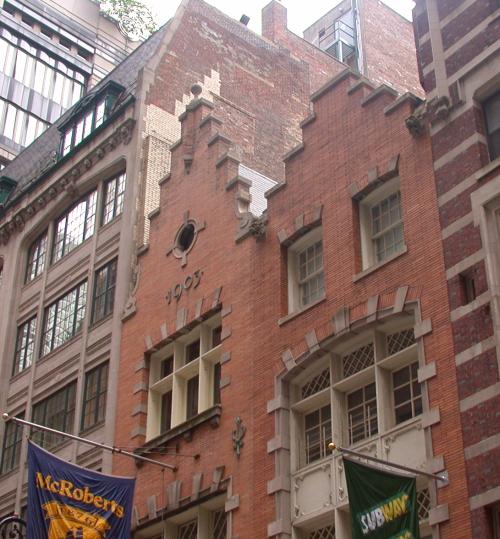Back in their glory days, the Dutch were busy going around the globe, stealing spices and resources, and creating outposts so they could steal more spices and resources more easily (true efficiency).
As part of their globe-trotting adventures, the Dutch found themselves on the island of Manhattan. There, they initially established a fort called Amsterdam to defend their fur trade business in the area and secure a strategic position at the mouth of the Hudson River.
The area around the fort eventually developed into a settlement called New Amsterdam, which served as the predecessor to modern-day New York.
Historical background
In the 17th century, European powers tried to colonise as much of North America as possible. The Dutch first explored the area back at the beginning of the century. On a boat of the Dutch East India Company servicing Prince Maurice of Nassau, an explorer named Henry Hudson explored the area in search of things to loot.

He did not find spices, but he found something just as fun — beavers. Ah yes, back in the day, beavers, specifically their pelts, were very valuable in Europe. Beavers were also expert dam builders, which the Dutch were interested in.
The Dutch were really into the beavers’ anal glands. Not for perverted things, mind you. The anal glands secreted castoreum, which they used to create perfumes. A bit counter-intuitive, but oh well.
READ MORE | 7 amazing facts about the Netherlands (that you may not know!)
In 1621, the Dutch West India Company was founded to manage trade in North America and secure beaver pelts and those sweet anal glands.
The mouth of the Hudson River provided the ideal strategic outpost to establish trade and protect the area. As such, Fort Amsterdam was built in 1624. By 1626, the Dutch purchased Manhattan from the Native Americans.
READ MORE | Did the Dutch really buy New York for 24 dollars?
New Amsterdam gets established
The settlement received municipal rights from its home country in 1653, becoming a full-fledged city. It developed akin to all colonial cities back then — a church was built, fortified walls were designed, houses and windmills constructed, you name it.
The town even welcomed Jewish refugees, one of them being the first Jew to own property in North America.

Another interesting fact about the city is that it was extensively documented compared to other settlements in the New World. The Castello Plan captured a detailed layout of the city in cartography.
The plan showcases the city in all of its detail. By cross-referencing with archival information from the time, it’s even possible to determine who lived in each house.

However, as geopolitics went back then, New Amsterdam did not stay Dutch for long.
The English takeover
In 1664, England and the Dutch Republic were at peace. That did not stop a couple of English frigates from entering the port of New Amsterdam and demanding the surrender of the city and the broader New Netherland province.
That also kickstarted the Second Anglo-Dutch War. The Dutch capitulated, and New Amsterdam got renamed New York in 1665, after the Duke of York.
During the Third Anglo-Dutch War in 1673, the Dutch managed to occupy the city again and renamed it New Orange.
READ MORE | 8 carbon copies of the Netherlands across the world
However, with the Treaty of Westminster in 1674, the Dutch returned the city to the Brits, who renamed it New York. The Dutch got Suriname in return, which was of great strategic and resource importance back in the day.
Dutch legacy in New York
Not much is left of New Amsterdam besides archaeological remains. The last house from New Amsterdam that survived in New York was unfortunately destroyed in the mid-19th century. However, the city’s cultural legacy has survived through the form of neo-colonial Dutch architecture.
Another clear legacy from New Amsterdam is the street layout, which has remained mostly intact in today’s Manhattan.
Have you noticed the resemblance between Dutch and local New York architecture? Tell us in the comments below!
Feature Image: John Wolcott Adams/Wikimedia Commons/Public domain




This was a brilliant trade! Remember the English got there backside kicked out of New York. And lost the whole continent to America. In return the Dutch made money of the resources (Bauxite, gold, diamonds and copper) of Suriname untill 1954 and did not return the country till 1975. Now is that fare to the people of Suriname NO! But from a financial standpoint it was the better trade.
No mention of the 1619 arrival of the first enslaved Africans and Atlantic Creoles? I enjoyed the article, however, it is important to include the whole picture so people know who aren’t that familiar with that aspect of our nation’s history
In order to even attempt to have the entire picture of slavery in America, wouldn’t you have to go back to at least Columbus/early 1500s, and the enslavement of the American/ West Indies natives? Not to mention the thousands of Irish and other European/ Slavic indentured slaves? It truly is an unfortunate and lasting part of human history.
Back in their glory days, the Dutch were busy going around the globe, stealing spices and resources, and creating outposts so they could steal more spices and resources more easily (true efficiency).
Any Article that starts like this is usually BS…. More Woke Crap 💩
There is an interesting story about how Wall Street got it’s name from being the dividing line against the local people.
The colonial history of Capetown, South Africa is almost identical to New York’s.
We still have the original Dutch castle.
A lot of inaccurate information in this post. And that’s apart from the “stealing” thing in the first sentence. For instance, shown is not the late 17th century Castello map by Vingbooms, but a 1916 copy by JW Adams. Nieuw Amsterdam (then in decline) was traded for Suriname by Peter Stuyvesant after the Second Anglo-Dutch war in Breda. That war was won by the Dutch after the Raid on the Medway, in which a large part of the English fleet was set on fire and destroyed.